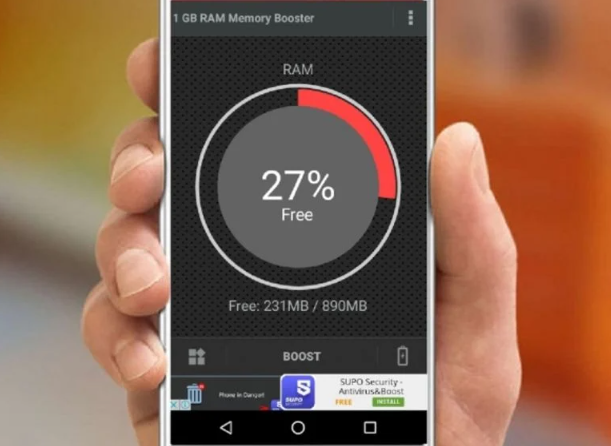Investments
Learn how to Mine Bitcoins and Other Cryptocurrencies
Advertisement
Cryptocurrency Mining: Exploring the Digital Universe
Mining cryptocurrencies, especially bitcoins, has become an exciting and profitable activity. This article covers all the essential aspects of mining, from how the machines work to power, cooling, and specialized hardware considerations.
The Energy Behind Mining
Discover the significant amount of energy required to keep mining machines operational, highlighting environmental challenges and considerations. Cryptocurrency mining is driven by intensive energy consumption, but its sustainability and efficiency vary globally. Let's explore the essential elements related to the amount of energy, encouraging the use of cheaper energy and considering the advantages of countries with tax exemptions.
1. Global Energy Consumption:
Cryptocurrency mining consumes a considerable amount of energy on a global scale, making it necessary to consider geographic factors and strategies for optimization.
2. Countries with Tax Incentives:
Some nations offer tax exemptions for mining operations, attracting investors and providing economic advantages.
3. Energy Cost and Competitive Advantages:
Countries with lower energy costs become preferred destinations for mining, ensuring competitive advantages and greater profitability.
4. Hardware Sustainability and Durability:
The search for sustainability drives innovations in mining hardware, aiming for energy efficiency and durability to reduce environmental impacts.
5. Leading Countries in Sustainability:
Some nations are at the forefront of sustainability in cryptocurrency mining, adopting responsible environmental practices and driving the development of green technologies.
6. Cost-Benefit Assessment:
The efficiency of mining machines, hardware durability and total cost of ownership are key in evaluating cost-benefit for miners.
7. The Future of Sustainable Mining:
The sector is moving towards more sustainable practices, with a growing awareness of environmental impacts and the need for responsible approaches.
By understanding these elements, it is possible to explore cryptocurrency mining in a more informed way, considering both energy challenges and opportunities for a more sustainable and efficient sector.
Cooling for Efficiency
Explore the importance of effective cooling to keep mining machines in optimal condition, ensuring efficiency and extending the life of hardware. Cooling plays a crucial role in the efficiency of cryptocurrency mining machines. In this context, the challenges related to heat dissipation, the solutions used to ensure the ideal functioning of the hardware and how thermal management contributes to the sustainability and durability of mining operations.
1. Thermal Challenges in Mining:
The calculation-intensive process of mining generates excessive heat, posing a significant challenge to the stability and longevity of the hardware.
2. Efficient Heat Dissipation:
Efficient cooling systems are implemented to dissipate the heat generated, preventing overheating and maintaining operational stability.
3. Liquid Cooling Solutions:
Some operations opt for liquid cooling systems, which are more effective in absorbing and transferring heat, contributing to thermal efficiency.
4. Ventilation and Air Circulation:
Good ventilation and air circulation are key, optimizing passive cooling and reducing dependence on active solutions such as fans.
5. Developments in Air Cooling:
Continuous innovations in air cooling seek to improve efficiency, reduce operating costs and minimize environmental impact.
6. Energy Efficiency in Thermal Management:
Thermal management strategies seek not only to cool machines, but to do so in an energy-efficient way, in line with the search for more sustainable practices.
7. Preventative Maintenance:
Preventive maintenance programs, including regular cleaning and inspections, are essential to ensure the continued performance and efficiency of your refrigeration system.
By understanding the importance of cooling in cryptocurrency mining, operators can implement effective practices to maintain optimal performance, extend hardware lifespan, and contribute to a more sustainable operation.
Specialized Hardware: ASICs vs. GPUs
Understand the differences between specialized hardware, such as Application-Specific Integrated Circuits (ASICs), and powerful graphics cards (GPUs), designed to tackle the complex calculations of mining. The choice between Integrated Application Specific Hardware (ASICs) and Graphics Processing Units (GPUs) is crucial in cryptocurrency mining. In this context, we will analyze the distinct characteristics of these technologies, their impacts on mining efficiency, and considerations when selecting the ideal hardware.
1. ASICs (Application-Specific Integrated Circuits):
- High Efficiency: Designed specifically for mining tasks, ASICs outperform GPUs in terms of efficiency and computing power.
- Energy consumption: Despite their efficiency, ASICs can have high power consumption, especially in more advanced models.
2. GPUs (Graphics Processing Units):
- Versatility: GPUs are more versatile and can be used in a variety of tasks beyond mining.
- Affordable Cost: Comparatively more affordable, GPUs are a popular option for individual miners and beginners.
3. Energy Efficiency:
- ASICs: While ASICs are more efficient in terms of hash rate per watt, GPUs can be a more balanced choice for those concerned about power consumption.
4. Competitiveness and Profitability:
- ASICs: In competitive mining environments, ASICs are often more profitable given their specialized processing capabilities.
- GPUs: In less competitive markets, GPUs can offer a profitable option, especially for individual miners.
5. Updates and Adaptations:
- ASICs: They are less adaptable to changes in mining algorithms, requiring hardware upgrades to remain effective.
- GPUs: They are more flexible and can be adjusted to adapt to different cryptocurrencies and algorithms.
6. Trends in Hardware Development:
- ASICs: The market is constantly evolving, with ASICs becoming more specialized and efficient.
- GPUs: Ongoing developments seek to balance efficiency and accessibility for individual miners.
When considering ASICs and GPUs in cryptocurrency mining, it is essential to consider efficiency, cost, adaptability and technological developments to make informed decisions aligned with specific mining objectives.
Mining Profitability
Analyze the average mining profitability, considering factors such as operating costs, cryptocurrency value and mining difficulty. Cryptocurrency mining profitability is a critical factor influencing miners' decisions. We will explore the elements that determine the profitability of this activity, including operating costs, cryptocurrency value, mining difficulty, and strategies for optimizing earnings.
1. Operating Costs:
- Electricity: The cost of electricity is one of the biggest factors. Miners seek to operate in locations with lower tariffs.
- Maintenance and Hardware: Maintenance and hardware acquisition expenses directly impact operational costs.
2. Value of Cryptocurrency:
- Volatility: Fluctuation in cryptocurrency values directly affects mining profitability. Mining during periods of high appreciation can be more profitable.
3. Mining Difficulty:
- Constant Adjustments: Mining difficulty is adjusted regularly to balance block confirmation time. Greater difficulty reduces profitability.
4. Strategies for Optimizing Earnings:
- Choice of Cryptocurrencies: Mining emerging cryptocurrencies can be more profitable than more established ones.
- Participation in Pools: Joining mining pools sharing rewards improves the regularity of earnings.
- Market Monitoring: Monitor market trends and adjust mining strategy as needed.
5. Long-Term Profitability:
- Sustainable Projections: Miners should consider long-term profitability, taking into account market volatility and mining difficulty trends.
6. Hidden and Unforeseen Costs:
- Extra Considerations: Hidden costs, such as taxes and unforeseen events, can impact profitability and must be considered in projections.
7. Technological Trends and Innovations:
- Technology Adoption: Miners that adopt more efficient technologies and innovations are more likely to maintain a profitable operation.
Understanding mining profitability is a complex exercise, requiring continuous analysis and adaptation to changes in the cryptocurrency landscape. Miners who manage to carefully balance the aforementioned factors can reap profitable benefits over time.
Mining Rig: Assembling your Mining Machine
Explore the essential components of a mining rig, from motherboards to power supplies, providing a practical guide to building your own mining machine. Assembling a mining rig is a crucial step for anyone looking to enter the world of cryptocurrency mining. This practical guide will provide insights into putting together an efficient rig, from choosing hardware to properly setting it up to optimize mining.
1. Choice of Hardware:
- GPUs or ASICs: Decide between using GPUs, which are more versatile and affordable, or ASICs, which are specialized and efficient.
- Processing Power: Choose GPUs or ASICs based on your desired processing power.
2. Motherboard and Power Supply:
- Compatibility: Make sure the motherboard supports the number of GPUs or ASICs you plan on.
- Efficient Power Supply: Choose an efficient power supply to handle power consumption.
3. Choosing Cryptocurrency:
- Mining Algorithm: Choose a cryptocurrency and learn about the associated mining algorithm.
- Rig Adaptation: Configure the rig for the chosen algorithm.
4. Physical Assembly:
- Proper Organization: Arrange the rig components efficiently to ensure good ventilation and prevent overheating.
- Good Ventilation: Install fans and ensure good air circulation to avoid thermal problems.
5. Mining Software:
- Software Choice: Opt for mining software that is compatible with your hardware and cryptocurrency choices.
- Software Configuration: Configure the software to connect to a mining pool to maximize earnings.
6. Monitoring and Maintenance:
- Constant Monitoring: Keep constant monitoring of the rig's performance and adjust settings as necessary.
- Regular Maintenance: Clean periodically to avoid dust accumulation that could affect cooling.
7. Security and Insurance:
- Incident Protection: Implement safety measures to protect your rig against potential incidents, such as power surges.
- Consider Insurance: Evaluate the possibility of insurance to cover damage or loss.
By following these steps, miners can assemble an effective rig, optimizing mining efficiency and maximizing financial returns. Continuous research and adaptation to changes in the mining landscape are essential to maintaining a successful operation.
5 Best Mining Machines
- Antminer S19 Pro:
- Manufacturer: Bitmain
- Algorithms: SHA-256 (Bitcoin)
- Profitability: High hash rate and energy efficiency.
- Whatsminer M30S++:
- Manufacturer: MicroBT
- Algorithms: SHA-256 (Bitcoin)
- Profitability: One of the most powerful for Bitcoin mining.
- AvalonMiner 1246:
- Manufacturer: Canaan
- Algorithms: SHA-256 (Bitcoin)
- Profitability: Good efficiency and durability.
- Innosilicon A10 Pro:
- Manufacturer: Innosilicon
- Algorithms: Ethash (Ethereum)
- Profitability: High performance for Ethereum mining.
- MicroBT Whatsminer D1:
- Manufacturer: MicroBT
- Algorithms: Blake256R14 (Decred)
- Profitability: Good option for Decred mining.
5 Cryptocurrency Mining Sites
- NiceHash:
- NiceHash is a platform that connects buyers of mining power with sellers of hash power. Miners can rent their processing power to different cryptocurrencies.
- Genesis Mining:
- Genesis Mining offers cloud mining contracts for various cryptocurrencies. Users can purchase mining power without the need for physical hardware.
- Hashflare:
- Hashflare is a cloud mining platform that offers lifetime mining contracts. Users can choose between different mining plans.
- Minergate:
- Minergate is a mining pool that allows users to mine various cryptocurrencies using their personal computer. They offer easy-to-use software for beginners.
- Cudo Miner:
- Cudo Miner is software that allows users to mine various cryptocurrencies, including Bitcoin, Ethereum and others. It offers a user-friendly interface and support for different devices.
5 Cryptocurrency Mining Sites on Mobile
Mining cryptocurrencies on your cell phone can be a convenient option. Here are some websites and apps that offer mobile cryptocurrency mining services:
- Electroneum:
- Electroneum is a cryptocurrency that allows mining via cell phone. They offer an easy-to-use app to start mining.
- StormGain:
- StormGain is a cryptocurrency trading platform that also offers mobile mining. The application has an intuitive interface.
- Pi Network:
- Pi Network is an early-stage cryptocurrency that allows mobile mining. They seek to create a decentralized community.
- Phoneum:
- Phoneum is a cryptocurrency project dedicated to mobile mining. They offer a simple app to start mining on your phone.
- CryptoTab Browser:
- CryptoTab Browser is a mobile browser that allows you to mine Bitcoin while you browse. It integrates a mining system into the browser itself.
Setting Up a Bitcoin Wallet
Learn how to set up a bitcoin wallet to receive mined bitcoins, ensuring security and accessibility to your earnings. Setting up a Bitcoin wallet is an essential step for anyone who wants to enter the world of cryptocurrencies. There are different types of wallets, such as online, offline, mobile and hardware, each with its specific characteristics.
When choosing a wallet, the user creates a unique address that allows them to receive, store and send bitcoins. Security is paramount, and it is crucial to protect the private key, responsible for accessing funds. Several platforms offer wallet options, whether for long-term storage or daily transactions. By following the necessary steps and understanding the importance of security, you can set up a Bitcoin wallet efficiently and securely.
Participating in a Mining Pool
Discover the art of joining renowned mining pools such as Slush Pool, Antpool and BTC.com to boost your chances of success in cryptocurrency mining. This article offers a practical and comprehensive look at mining, empowering readers to dive into this digital journey with knowledge and confidence.
By participating in a mining pool, miners combine their computing resources, accelerating block resolution and sharing rewards in proportion to processing power. This strategy smoothes out natural variations in obtaining rewards, making mining more accessible for all enthusiasts, regardless of the size of their infrastructure.
By using specialized software, participants coordinate their activities and ensure a fair distribution of rewards. This collective approach offers a more predictable way to earn, making cryptocurrency mining an exciting and accessible journey for a diverse range of miners.
Trending Topics

Relationship app for Christians: find a love to share your faith!
See the advantages of using a dating app for Christians and discover the best ways to find a partner who shares your faith!
Keep Reading
Itaú Uniclass zero annual fee credit card
Impunity petition in Brumadinho. The civil society represented below expresses its indignation at such IMPUNITY and demands the
Keep ReadingYou may also like

Keep your device fast and efficient!
See the power of a faster phone! These apps eliminate unwanted files that accumulate on your device over time
Keep Reading

